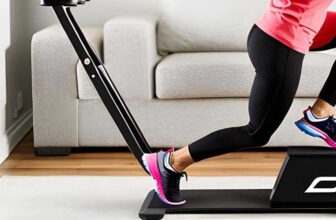
Riding a bike is a prevalent and famous workout and transportation format offering countless fitness advantages. Many individuals wonder if biking is good for their knees, as knee health is a crucial concern for maintaining an active lifestyle. In this article, we will explore the impact of biking on knee strength, knee pain relief, the need for knee pads, the potential risks of biking daily, and the overall benefits of cycling for knee cartilage.
Does Biking Strengthen Knees?
Cycling is a low-impact exercise that can assist in intensifying the muscles encircling the leg and knee joints. When you do pedaling, your hamstrings, calf muscles, and quadriceps engage to generate power for your movement. These muscle groups provide stability and support to the knee joint, which ultimately contributes to increased knee strength. Regular biking can enhance muscle endurance and help maintain joint stability, reducing the risk of knee injuries.
It’s important to note that proper bike fit and technique play a significant role in maximizing knee strength benefits. Adjusting your bike to ensure a proper fit and using the correct form while pedaling will help distribute the workload evenly across your leg muscles, preventing excessive strain on the knees.
Does Bike Riding Help Knee Pain?
Contrary to what some may believe, biking can actually help alleviate knee pain. The low-impact nature of cycling minimizes the stress on the knees compared to high-impact activities like running. That converts it to a magnificent workout option for people who are prey to knee pain or those who are recovering from any knee accident or injuries.
When you ride a bike, the fluid movement of pedaling helps lubricate the knee joint, reducing friction and discomfort. Additionally, biking helps strengthen the surrounding muscles, which can provide better support to the knees, potentially easing pain and improving overall joint function.
Do You Need Knee Pads for Bike Riding?
While knee pads are not necessary for every cyclist, they can be beneficial in certain situations. If you engage in mountain biking, BMX, or any form of aggressive riding that involves jumps or tricks, wearing knee pads is highly recommended. These activities pose a higher risk of falls and impact injuries, and knee pads offer an extra layer of protection.
For casual riders or those who primarily use bikes for transportation or light exercise, knee pads may not be essential. However, if you have a history of knee injuries or are concerned about protecting your knees, wearing knee pads during any type of biking can provide added peace of mind and protection.
Is Biking Everyday Bad for Your Knees?
Biking every day can be an excellent form of exercise and transportation, but it’s crucial to strike a balance to avoid potential knee issues. While biking is generally considered a low-impact activity, repetitive strain from excessive or intense cycling without appropriate leisure and healing can result in overuse or severe injuries.
To prevent knee problems, it’s essential to pay attention to your biological body and intersperse leisure days into your routine. Varying your workouts by incorporating other less-effective movements including swimming or walking, can help reduce the strain on your knees. Additionally, maintaining proper bike fit, using appropriate gear, and gradually increasing your mileage or intensity can minimize the risk of knee-related problems.
Can Riding a Bike cause benefit to Your Knees?
Yes, riding a bike is generally good for your knees. Biking is a low-impact activity that assists in reinforcing the muscles around the knees, improving joint sturdiness and diminishing the hazardous chances of accidents or injuries. It also promotes better lubrication of the knee joint, potentially easing knee pain. However, it’s important to ensure proper bike fit, use the correct technique, and incorporate rest days to maintain knee health and prevent overuse injuries.
Is Cycling Good for Knee Cartilage?
Cycling has been shown to be beneficial for knee cartilage. Research suggests that moderate cycling can promote cartilage thickness and protect against cartilage loss. The smooth, fluid motion of pedaling helps stimulate the generation of bone synovial liquid, or fluid, which sustains the cartilage and promotes joint health. Additionally, the low-impact nature of cycling minimizes wear and tear on the knee joint, reducing the risk of cartilage degeneration.
In conclusion, riding a bike is indeed good for your knees. Biking strengthens the muscles around the knees, helps alleviate knee pain, and promotes knee cartilage health. It is a less effective workout that supplies innumerous advantages without placing excessive strain on the joints. By ensuring proper bike fit, using the correct technique, and incorporating rest days, you can enjoy the advantages of cycling while maintaining optimal knee health. Recall to confer with a registered fitness expert or healthcare professional in case you find yourself having any specific concerns or pre-existing knee conditions. So, hop on your bike and enjoy the ride while keeping your knees healthy and strong.






